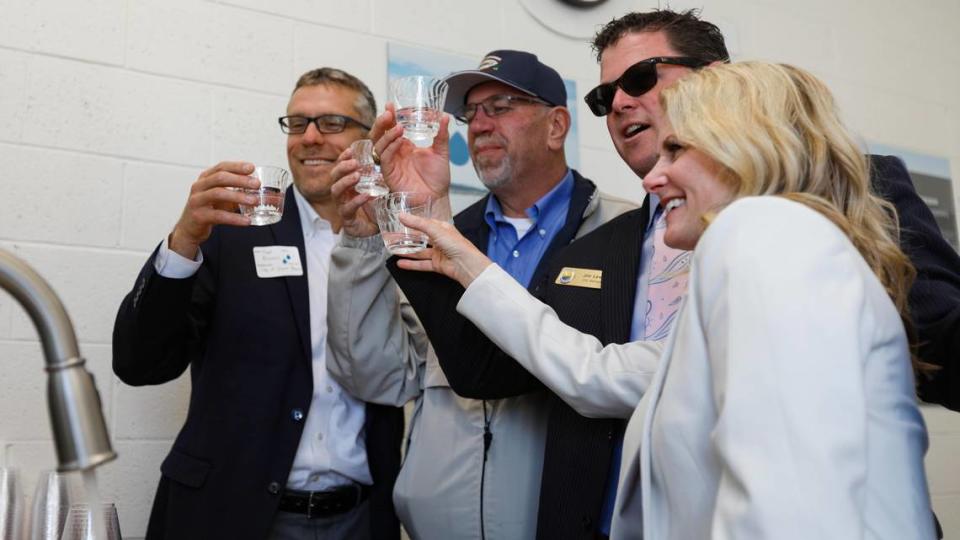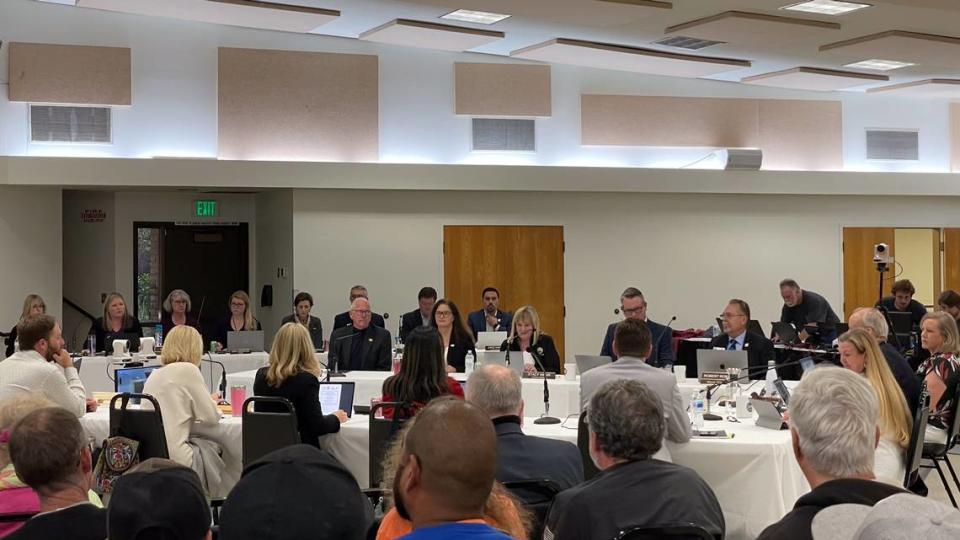Central Coast Blue water project loses another partner as Grover Beach backs out
The future of water sustainability and the Central Coast Blue project grew even murkier Monday after another south San Luis Obispo County city announced it plans to withdraw from the project.
At its Monday meeting, the Grover Beach City Council heard a study on the water sustainability project’s future, which was put in jeopardy April 12 when the Arroyo Grande City Council voted to drop out of the project amid soaring costs.
At the study session, the Grover Beach council was presented with an updated look at both the future of the project, the city’s long-term water outlook and the water rate structure changes that were made to pay for the stalled project.
Former Grover Beach mayor Debbie Peterson, who started the organization Grover H2O to oppose the water rate structure changes, said the City Council faces an uphill battle regaining the public’s trust on water issues after Central Coast Blue fell through.
“When you tell me in 2021 that’s going to be all the money we need and we’ll have plenty to fund this project and you come back (asking for more), I say you fooled me once,” Peterson said during public comment. “Because you came back to me in 2023 and you say, ‘It’s OK, we’re going to have enough money,’ you fooled me twice — your credibility is busted.”
The council instructed staff to start the withdrawal process from the Joint Powers Authority of Grover Beach, Pismo Beach and Arroyo Grande and start working on a new water resiliency plan, leaving Pismo Beach as the sole city remaining with attachments to the project.
City staff were also instructed to plan out modifications to the city’s water rate structure to remove funding for Central Coast Blue while maintaining funding for other water resiliency efforts.

How much water does Grover Beach have?
As it stands, Grover Beach gets all of its water from Lopez Lake and the Santa Maria Groundwater Basin and has greatly benefited from wet winters in 2023 and 2024 that have refilled local reservoirs including Lopez.
Groundwater monitoring has indicated that those levels have also rebounded since the winter storms, allowing the city to rely on the basin to maintain current levels of groundwater pumping.
Historically, Grover Beach has had access to 2,207 acre-feet of water per year between its two sources, comprised of 800 acre-feet of Lopez water and 1,407 acre-feet of groundwater, according to the meeting’s staff report. However, since 2019 Grover Beach has limited groundwater pumping to 500 acre-feet per year to keep the basin in better shape.
While rains have given Grover Beach and other South County cities some breathing room from the drought conditions that plagued the region between 2015 and 2022 — enough to warrant modifying the the current water shortage declaration from a Stage 1 declaration to a “no water shortage” declaration at a future meeting — there’s no guarantee those wetter conditions will hold, the staff report said.
Demand for water has come dangerously close to the city’s annual supply of 1,300 acre-feet in the years since the city started limiting groundwater pumping in 2019. In 2020, the city used 1,288 acre-feet, and in 2021, it used 1,271.
The water supply is now in good shape for the next five years, with a projected 1,300 acre-feet per year set to be available, but demand will likely mirror the past five years, which leaves the city without a significant buffer against unseen needs, according to the staff report.

Where does the future of water in South County go from here?
Though Grover Beach is looking to leave the Central Coast Blue joint powers authority, staff did not recommend lowering water rates from the increased structure approved in December 2023.
That said, the City Council could still make changes to the rate structure at a special meeting set for Monday, May 13, according to the staff report.
Staff recommended five different options for how the council should proceed with water rates, including leaving the December 2023 rate structure in place, increasing or lowering rates to fund the revised cost of the project, only raising rates for water resiliency efforts or dropping the revised structure entirely.
According to the staff report, Grover Beach is participating in the county’s desalination project, which likely won’t be built until the mid-2040s. The city is unable to finance such a project of its own due to the high costs, meaning any desalination efforts in the South County would need to be a joint effort between the Central Coast Blue partner cities and likely wouldn’t be available until 2050.
The staff report also said there’s no indication PG&E is interested in participating in the desalination project conceived in 2016 that would carry desalinated seawater from the Diablo Canyon nuclear power plant to the region.
According to the staff report, as it stands Grover Beach is unable to pay for a water sustainability alternative such as a desalination plant, which may not be a reality until 2050.
However, the city could turn to other resources in the event of a drought if nothing changes and the city must rely on water from Lopez and the groundwater basin.
The city could purchase state water from the county or Oceano Community Services District if reserves approach drought levels again, according to the staff report.

